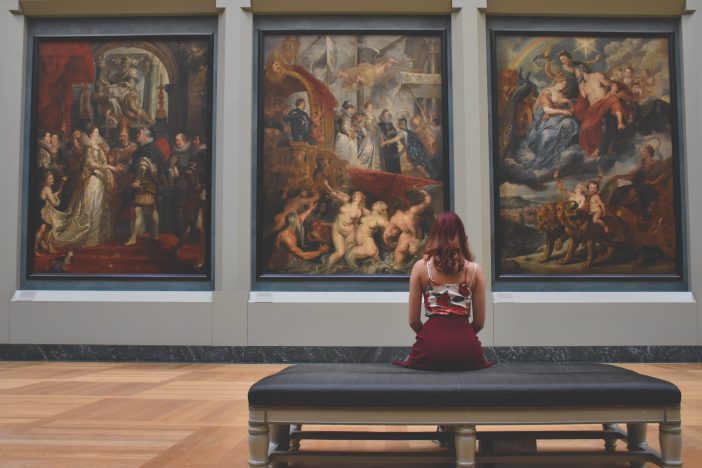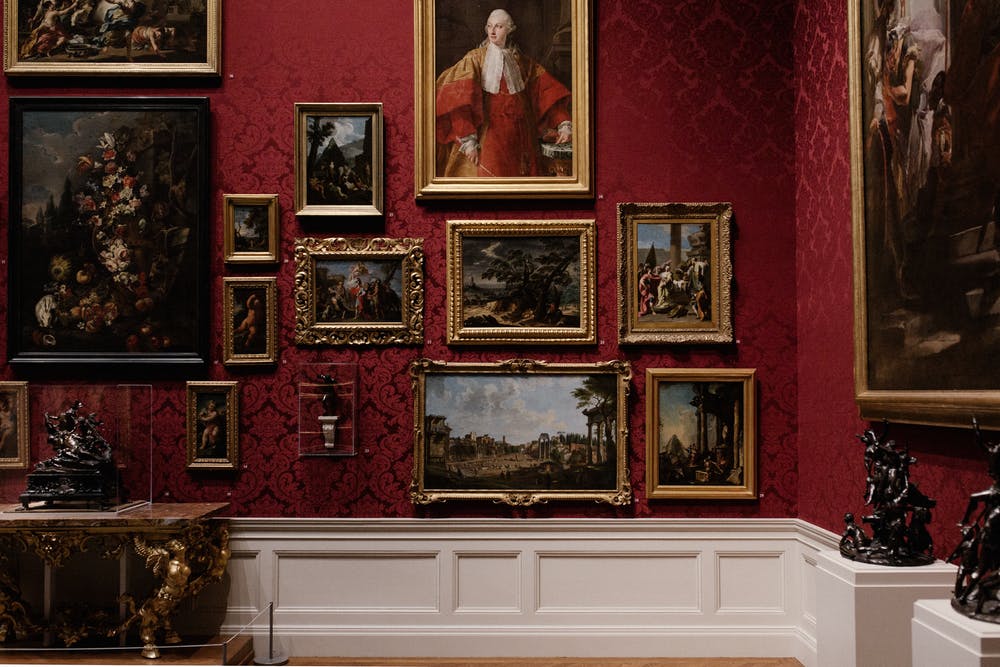Currently, the rare art market is growing, and it seems that every new day art auctions are setting the world records for the highest prices ever paid. With fine art, as with other investments, it is important to make your research and get the expert opinion in the area. However, for the fine art, investors need to be ready to invest a big amount of money. For instance, in 2017, the most expensive artwork ever “Salvator Mundi” by Leonardo da Vinci was sold to Prince Badr bin Abdullah. It is the only artwork by da Vinci that remains in the private collection.
Investors have two choices: to buy classic artworks from famous artists or to buy paintings from relatively unknown painters; or there is a third option that is between two categories mentioned. The market would be more stable and there would always be a demand for the top painters, for example, Monet, Picasso and Van Gogh. The price of the top art pieces increased by 10% since the beginning of the decade and will keep growing.
Several art advisors highly recommended to purchase the art that you would like instead of just concentrating on investment. Also, to get expected high ROI it is better to keep the art for at least 5-10 years in order to wait for the value increase.
Usually buying and selling high-value art happens in the in a well-known auction houses such as Christie’s and Sothbey’s. The auction houses get commissions of around 20%-25% from every sale made as they act as brokers.
What to know and what questions to ask before investing in art?
- Is the painter recognised and highly rated by the art institutions, dealers, critics ?
- Is the artist/painter considered to be an art of the movement (ex. avant-garde)?
- Would the work of the artist have a good resale value ( for example in 5-10 years)? Would the value of the artwork increase over time?
- Are the artworks of the artist preserved in galleries or institutions?
 Before investing in art there are several points to consider: the edition size, the significance of the work, in what condition it is, and whether it is signed and numbered by the artist.
Before investing in art there are several points to consider: the edition size, the significance of the work, in what condition it is, and whether it is signed and numbered by the artist.
Keep in mind: that artwork is more difficult to convert in cash than stocks as well as bonds and that it is a non-liquid asset. Also, you need to calculate in the maintenance and storage cost.
Advantages and Disadvantages of Investing in Art
1st Advantage: No market fluctuations. The art market most of the time outperforms stock market. For instance, if the stocks crash overnight, the art investment may be still doing great, it is considered to be very stable.
2nd Advantage: Enjoyment in value. Most of the people that invest in art are also collectors at the same time. You can appreciate fine art and display it too. However, for the people that are not interested in art, it would most probably be more difficult make an investments and get the return on it.
3rd Advantage: Portfolio diversification. Regardless of the economic outlook, bankers, financial advisors, and wealth managers use fine art to balance their clients´ portfolios and diversify their asset base.
1st Disadvantage: Not a liquid asset. 99% you won’t get a profit from art overnight. It takes effort and time (approximately 10-15 years) to sell the art from the moment you bought it.
2nd Disadvantage: No Guarantee that it will appreciate. Every artwork is unique, and the art market has fluctuations: ups and downs. When you purchase an artwork, you can not know for sure the true value of it and how it would change over time. There are many factors that can affect the value even the reputation of the artist.
3rd Disadvantage: Taking care can be difficult. Once you purchased the artwork, it can become a problem of storing it to preserve the value. Additionally, for investor it would be highly recommended to insure the artwork or rarely it already comes with the insurance if you purchase it from an auction house or collector.
Art-investment advisor
You would need an art-investment advisor to support you before purchasing the art. Having opinion of someone with experience in the art market can help you gain the profit and minimise potential risks.
Reasons to ask an advisor:
- You need to understand what art and from which artist to buy;
- You need to know the right timing when to buy an art;
- You need to check if the art is original or a copy.
The art market is extremely complex and requires a lot of expertise when buying a piece as an investment. A lot of artists may be over or undervalued based on the demand that appears for that specific artist. Also, there are two types of art that have to be taken into consideration and each one requires a different approach.
Alternative Investment Coach (n.d.). Fine art investment. Retrieved April 9, 2020, from http://alternativeinvestmentcoach.com/luxury-items/fine-art-investment/
Artequesta (n.d.). Why invest in art. Retrieved April 10, 2020, from https://artequesta.com/why-invest-in-art/
Barton, S. (2018). Fine art can be a fine investment. Retrieved April 10, 2020, from https://www.investopedia.com/articles/pf/08/fine-art.asp
Bollen, B. (2004). Fine art of art investing. Retrieved April 8, 2020, from https://www.ipe.com/fine-art-of-art-investing/17160.article
Rowan, L. (2019). Should you invest in art? Retrieved April 10, 2020, from https://twocents.lifehacker.com/should-you-invest-in-art-1839870805
I hope you have enjoyed reading this blog and I am looking forward to further discussing this topic with you below in the comments.




Статья очень полезная. Я очень уважаю людей, которые могут себе позволить наслаждаться бесценными творениями искусства и предоставлять свои частные коллекции для музейных выставок. Это, естественно, отличный инвестиционный вклад для себя и будущего поколения.
спасибо большое за Ваш комментарий!
The author objectively showed the advantages and disadvantages of investing in art, and also gave useful recommendations. Good job!
Hello Vyacheslav, thank you for your comment!
Old art pieces need special conditions for preservation, so probably only extremely rich people can afford to invest in those…
Hello Sabina, I agree. Also, sometimes companies are the ones, who buy art pieces and preserve them.
Very interesting article. Would be interesting to know if it is possible to buy pieces of art with cryptocurrencies ?
Elena, thank you very much for your comment. You can buy artwork with cryptocurrencies from several auction houses. However, it is very interesting to know how do they register a buyer, since by paying with cryptocurrency people are not obliged to state their names.
Alternatives are not only increasing in popularity with investors looking for ways to increase their income or reduce risk, but are also of growing importance to the financial planning community as a way of assisting citizens in taking their money out of the money market to cushion the impact of economic meltdowns.